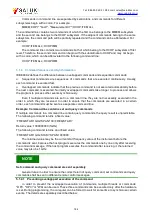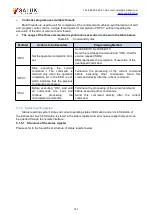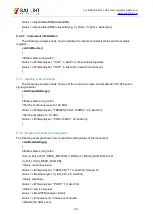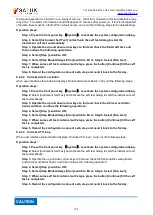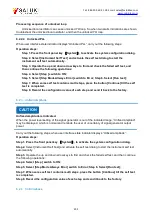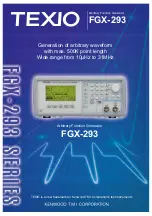
Tel: 886.909 602 109 Email: sales@salukitec.com
198
The frequency synthesizer produces high-purity continuous wave RF signal through multiloop
frequency synthesis technique.
Vector signal generation unit divides and mixes the RF signal from frequency synthesizer, which
then enters in RF vector modulated component for vector modulation so that a RF vector modulated
signal can be obtained; after frequency multiplication, RF signal enters in microwave vector
modulated component for vector modulation so that a microwave vector modulated signal can be
obtained; both the microwave vector modulated signal and MMW signal which is frequency multiplied
by 40/67GHz frequency multiplied component are converted to a MMW vector modulated signal, thus
generating full range vector signal.
RF signal conditioning unit filters the signal, completes the fixed amplitude, pulse modulation,
programmable attenuation and other amplitude control functions, and outputs the signal to RF output
port.
Baseband signal generating and conditioning drive unit has such functions as internal baseband
signal generation, baseband signal input selection, baseband signal conditioning, and vector
modulator drive. Baseband signal generator produces baseband modulated signals and common
standard communication modulated signals, required by digital modulation. The signal through I/Q
conditioning drive is input to the RF vector modulated component and microwave vector modulated
component, to drive I/Q modulator.
The I/Q conditioning drive receives I/Q signal, external input I/Q signal and other calibrated
signals produced by baseband signal generator, then regulates circuits through gain adjustment,
offset voltage correction and differential signal conversion etc., and finally outputs to drive both
low-range I/Q modulator and high-range I/Q modulator, generating the required vector modulated
signal. Wide-band I/Q input signal is received directly to microwave vector modulated component.
6.2 Fault diagnosis and troubleshooting
This section provides a simple method to determine and handle with a faulty S1465 series signal
generator (if any). Please feed back the problem accurately to the factory when necessary, so that
we can provide service for you as soon as possible.
Fault symptom and troubleshooting methods are listed as below based on the type of function.
6.2.1 System issue
6.2.1.1 Ready lamp fails
Check if signal generator 220V AC input is normal. Any deviation from the maximum allowable
deviation of 220V±10% may stop the instrument working normally. In the case of any abnormality,
check external circuits, locate the fault, troubleshoot the instrument, and then turn it on again. If the
battery of instrument itself is the cause, send the instrument back to the factory for battery repair or
replacement
6.2.1.2 Fan fails after power on
In the event that the fan fails after power on, check if it gets blocked or dusty. If any, turn off the
instrument to remove the obstacles or clean the fan. Turn on the instrument again, and check that the
fan works. Otherwise it should be repaired or replaced by the factory.
6.2.2. Unlocked hardware
6.2.2.1 Unlocked reference loop
The user interface state indicator displays the alarm information: “Unlocked reference loop”. If
NOTE
Fault diagnosis and guide



